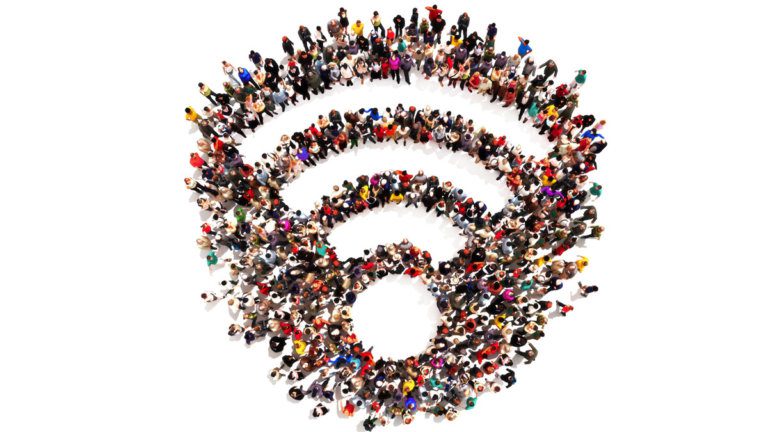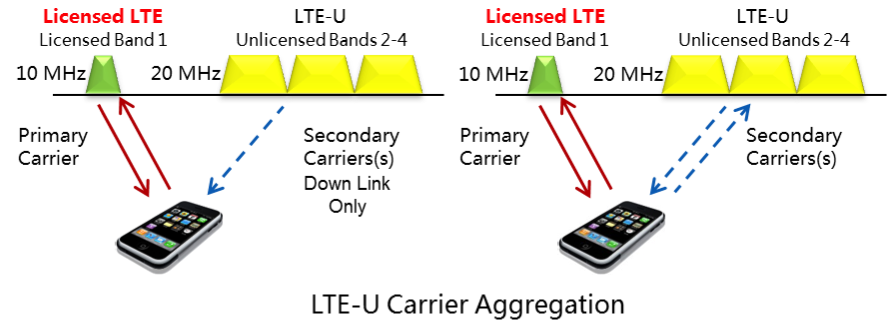Wireless
Will Wi-Fi Have to Share the Waves?

A New Competitor?
Wi-Fi is alive and well and will be with us for a long time to come. But for the first time since it became the dominant wireless access technology, there is a potential competitor on the horizon.
Few technologies today are as key to how we communicate as Wi-Fi. Worldwide about 50% of Internet traffic relies on Wi-Fi and about 3% relies on mobile networks. As more and more consumer products come equipped with Wi-Fi it’s expected that Wi-Fi will continue to increase the percentage of network traffic it carries. If your phone stops working, you might not notice for hours, but if Wi-Fi stops working you’ll probably notice within minutes (especially if you have kids to let you know).
So if some new technology could change how you surf the net, you’d probably want to know about it, right? LTE Unlicensed (LTE-U for short) may well be that new technology. You might recognize LTE as the 4G technology that allows your new smartphone to connect to the Internet at much faster speeds than the previous generation of smartphones. Mobile network operators have been deploying 4G networks as fast as they can to help them manage the explosion of data traffic on their networks, but they know they can’t handle all the data users want with their own networks. Offloading to Wi-Fi is a solution the wireless industry has been developing that allows the two very different technologies to work with each other. You may even already have this capability on your smartphone or other wireless devices.
Using LTE in the unlicensed frequency bands used by Wi-Fi could be very seamless for mobile network users and recent advances in LTE may allow this to be done fairly easily. LTE now supports a capability called carrier aggregation. This is intended to allow mobile operators to combine the various licensed spectrum bands they own into a single data connection between the user and the network. More spectrum equals more and faster data.
You might see where this is heading: Why not use carrier aggregation to not only combine licensed spectrum but also add in the unlicensed spectrum primarily used by Wi-Fi today? This could simplify Wi-Fi and LTE integration – it would all be LTE! This sounds great for mobile network operators, but what would it mean for Wi-Fi users?

LTE is designed for licensed spectrum where all of the data traffic is managed by a single network operator. So LTE as currently designed won’t play fair with other users in the unlicensed bands. Wi-Fi is designed to be a cooperative network. It works with multiple access points owned by different people or companies all trying to use the same spectrum.
Some regions of the world mandate that unlicensed spectrum technologies must be able to share the spectrum, so LTE can’t be used without modifications in those regions. Unfortunately North America is not one of those regions (nor is China).
How Likely is LTE to Compete With Wi-Fi?
It’s unlikely that LTE-U would actually be deployed by a mobile network operator without some form of fairness-mechanism, because the backlash from consumers and industries would be very undesirable. However, even with a fairness-mechanism, more network technologies would be contending for the same amount of unlicensed spectrum, which could mean your Wi-Fi connection is not as fast or responsive as it could be.
LTE-U is still very early in its development. We have the opportunity to mold it into something that will help create better wireless access solutions for the future and play well with Wi-Fi. From some perspectives, Wi-Fi is a far more efficient technology, some estimating up to 30x more. Today, because Wi-Fi is ubiquitous in consumer electronics and the home and office, more data with a growing percentage is transmitted over Wi-Fi than mobile networks by an order of magnitude, using less spectrum than is licensed to mobile operators. From other perspectives, based on the technology of LTE, it could be considered more efficient than Wi-Fi: Some reports estimate as much as 3-5x more efficient in how it transmits data across the air.
LTE-U has many capabilities that we all could benefit from if they were to be included in Wi-Fi. In fact, there is work underway to add some of these capabilities, but the Wi-Fi we know and love has some basic design principles that may preclude it from being as robust and efficient as LTE if LTE were as ubiquitously deployed. These design principles are the same ones that allow anyone to share the unlicensed spectrum with Wi-Fi.
So, if you can’t beat them, can we join them, or meet them in the middle? LTE-U Standalone has been suggested as a way to allow LTE-U to be used without any licensed spectrum. LTE-U Standalone would require enhancement of the LTE protocols to allow it to work well in unlicensed bands, both to share the spectrum and manage interference from other RF technologies using the unlicensed bands.
For now Wi-Fi will remain the network we all rely on, so you can rest assured that it still has a lot of life left. However, it’s possible that someday LTE-U will be the wireless access network technology we all rely on.
By Ian MacMillan -

